Find Help
More Items From Ergsy search
-

Self-care for sprains and strains
Relevance: 100%
-

Think Pharmacy: Sprains and Strains
Relevance: 97%
-

How to treat a sprained ankle
Relevance: 57%
-

What is the H3N2 flu strain?
Relevance: 37%
-
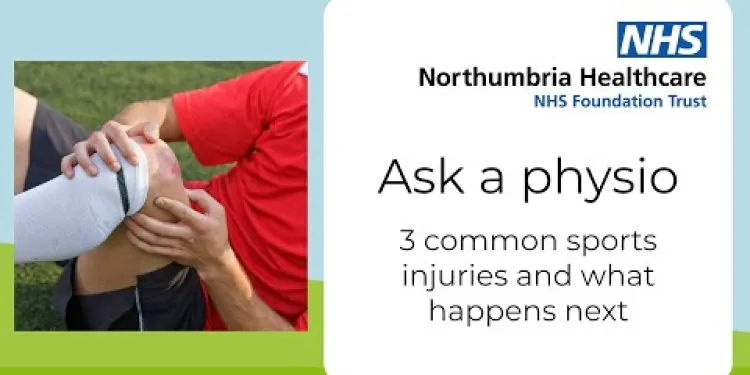
Ask a physio: 3 common sports injuries and what happens next
Relevance: 37%
-

Is Super Flu a new strain of virus?
Relevance: 36%
-
New Covid Variant Strains
Relevance: 33%
-

Is the winter flu jab effective against all flu strains?
Relevance: 33%
-

Is H3N2 more dangerous than other flu strains?
Relevance: 32%
-

Advice on sports injuries
Relevance: 25%
-

Can chiropractors help with sports injuries?
Relevance: 20%
-

MSK Lower Back Pain information video
Relevance: 19%
-

Is there a vaccine for H3N2?
Relevance: 13%
-

Why does H3N2 often lead to more severe flu seasons?
Relevance: 13%
-

Can animals get Super Flu?
Relevance: 13%
-
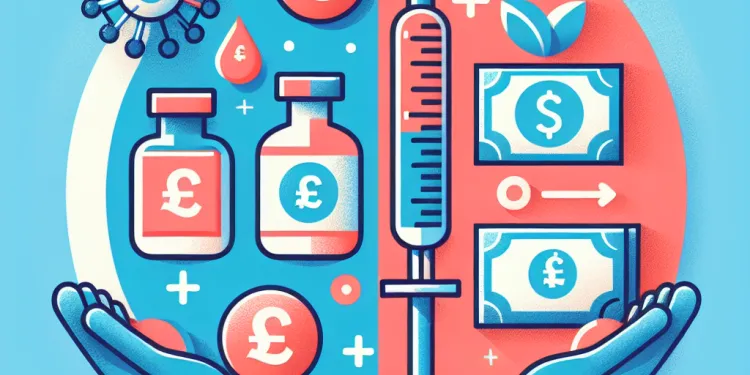
How effective is the flu vaccine?
Relevance: 13%
-

Can Super Flu cause a pandemic?
Relevance: 13%
-

Is there a difference between E. coli and Escherichia coli?
Relevance: 13%
-
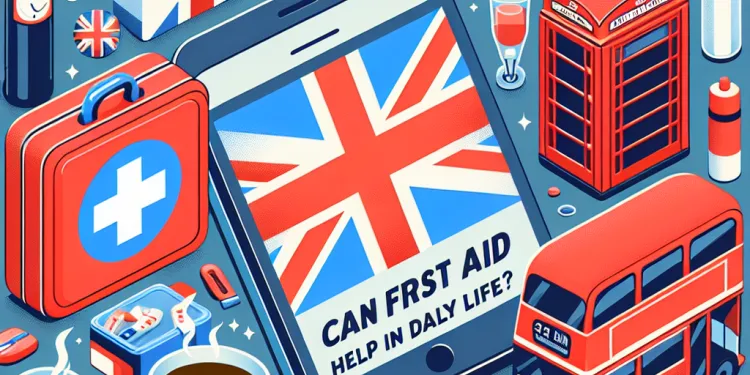
Can first aid skills help in daily life?
Relevance: 13%
-

What causes Super Flu?
Relevance: 13%
-

Has Super Flu occurred in the past?
Relevance: 13%
-

Does E. coli play any beneficial role in the human body?
Relevance: 13%
-

Can I get norovirus more than once?
Relevance: 13%
-
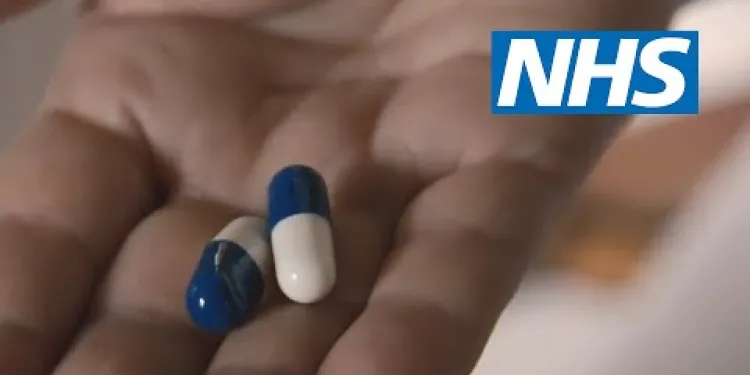
How to treat back pain | NHS
Relevance: 12%
-

Is E. coli always harmful?
Relevance: 12%
-

When does the H3N2 flu season typically occur?
Relevance: 12%
-

Can E. coli cause illness?
Relevance: 12%
-
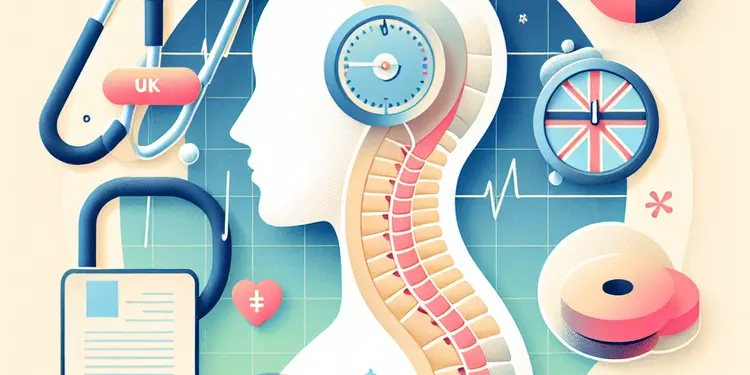
Is rest important for recovering from whiplash?
Relevance: 12%
-

What is Super Flu?
Relevance: 12%
-
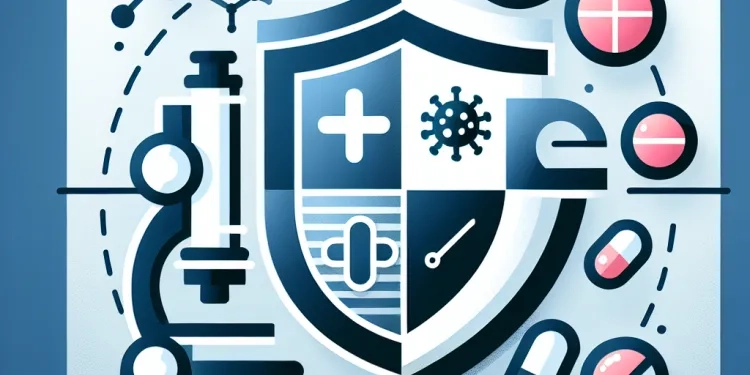
Can the bubonic plague become resistant to antibiotics?
Relevance: 11%
-

Are E. coli, E coli, and ecoli the same thing?
Relevance: 11%
-

What is E. coli?
Relevance: 11%
-

Are E.coli and E coli and ecoli the same thing?
Relevance: 11%
-

Useful information for patients with lower back pain
Relevance: 11%
-
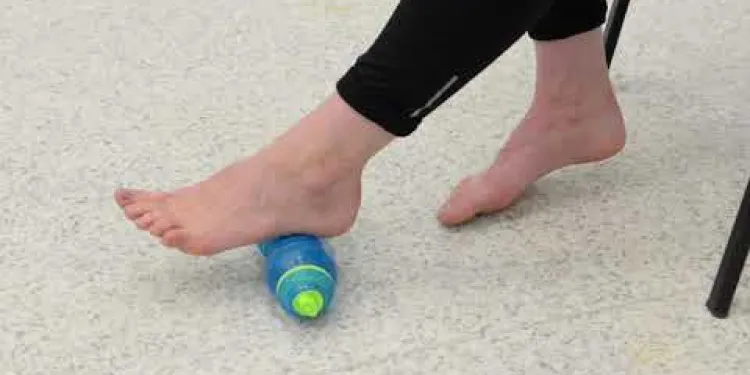
Foot Pain
Relevance: 11%
-

When is the best time to get the flu vaccine?
Relevance: 11%
-

What causes whiplash in a car accident?
Relevance: 11%
-

Can the flu jab give you the flu?
Relevance: 10%
-

Why would someone need to self-test their eyes?
Relevance: 10%
-

Is the Nimbus variant more contagious?
Relevance: 10%
Think Pharmacy: Sprains and Strains
Understanding Sprains and Strains
Sprains and strains are common injuries that affect muscles and ligaments, often resulting from physical activities or accidents. A sprain involves the overstretching or tearing of ligaments, which are tissues connecting bones at joints. Common sites for sprains include the ankles, wrists, and knees. Conversely, a strain refers to the overstretching or tearing of muscles or tendons, particularly areas like the lower back or hamstrings. While both injuries can cause pain, swelling, and limited mobility, knowing the difference between them is essential for appropriate treatment and recovery.
Initial Steps for Treating Sprains and Strains
For immediate treatment of sprains and strains, the R.I.C.E. method is highly recommended:
- Rest: Avoid using the injured area to prevent further damage.
- Ice: Apply ice packs to the affected area for 15-20 minutes every 2-3 hours to reduce swelling.
- Compression: Use an elastic bandage to compress the injury, helping to limit swelling.
- Elevation: Keep the injured limb raised above heart level to decrease swelling and pain.
These steps should be followed for the first 48-72 hours post-injury. Over-the-counter painkillers like paracetamol or ibuprofen can also help manage pain and inflammation during this period.
When to Visit Your Pharmacist
If you have a sprain or strain, consulting your local pharmacy in the UK can be beneficial. Pharmacists can provide valuable advice on pain management and recommend appropriate support products like braces or compression sleeves. They can also advise on whether further medical consultation is necessary.
Specific signs that require professional medical evaluation include severe pain, significant swelling, inability to move the affected area, or if the injury does not improve with self-care measures. In such situations, your pharmacist may recommend seeing a GP or visiting a minor injuries unit.
Preventing Future Sprains and Strains
Preventing sprains and strains is key to maintaining an active lifestyle. Here are some tips to reduce the risk of these injuries:
- Warm-up thoroughly before engaging in physical activities.
- Wear appropriate footwear that provides adequate support.
- Perform strengthening exercises to build muscle resilience.
- Be mindful of your environment to avoid accidents.
By taking these preventive measures, you can enjoy physical activities with a lower risk of injury.
Conclusion
Sprains and strains are common but manageable injuries. By understanding how to treat them initially and recognising when to seek professional help, you can ensure a swift recovery. Your local pharmacy is an accessible resource for advice and products to assist in the healing process and prevent further injuries.
Think Pharmacy: Sprains and Strains
What Are Sprains and Strains?
Sprains and strains happen often when you hurt muscles or ligaments. This can happen if you play sports or have an accident.
A sprain is when you pull or tear ligaments. Ligaments are tissues that connect bones at joints. You can sprain your ankle, wrist, or knee.
A strain is when you pull or tear muscles or tendons. This can happen in the lower back or hamstrings.
Both sprains and strains make you feel pain, swelling, and you might have trouble moving. It is important to know the difference so you can treat them properly and get better.
How to Treat Sprains and Strains Right Away
Here is what you can do first to help a sprain or strain. It is called the R.I.C.E. method:
- Rest: Stop using the hurt area so it doesn’t get worse.
- Ice: Put ice on the hurt area for 15-20 minutes every 2-3 hours. This helps reduce swelling.
- Compression: Wrap the hurt area with a bandage. This helps keep the swelling down.
- Elevation: Raise the hurt part above your heart. This helps with swelling and pain.
Do this for the first 2-3 days after getting hurt. You can also take medicines like paracetamol or ibuprofen to help with pain.
When to Ask Your Pharmacist for Help
If you hurt yourself, you can ask a pharmacist for help. Pharmacists can tell you how to manage pain and suggest things like braces.
Go to the pharmacist if the pain is very bad, if there is a lot of swelling, if you can’t move the hurt area, or if it isn’t getting better with rest.
The pharmacist might say you need to see a doctor or go to a minor injury unit if the injury is bad.
How to Stop Sprains and Strains from Happening
It's good to stop sprains and strains before they happen. Here are some tips:
- Warm up before doing sports or exercise.
- Wear good shoes that support your feet.
- Do exercises to make your muscles strong.
- Watch your step to avoid falls and accidents.
By doing these things, you can have fun doing activities and stay safe.
Conclusion
Sprains and strains are common but you can handle them. Know how to treat them and when to get help. Your local pharmacy is a good place to get advice and things to help you heal and prevent other injuries.
Frequently Asked Questions
What is the difference between a sprain and a strain?
A sprain involves overstretching or tearing ligaments, while a strain involves overstretching or tearing muscles or tendons.
What should I do immediately after a sprain or strain?
Immediately after a sprain or strain, you should follow the R.I.C.E. method: Rest, Ice, Compression, and Elevation to reduce swelling and pain.
How long should I apply ice to a sprain or strain?
Apply ice for 15-20 minutes every 2-3 hours for the first 48 hours after the injury.
Can I still walk on a sprained ankle?
It is recommended to avoid putting weight on a sprained ankle to prevent further injury. Use crutches if necessary.
When should I see a doctor for a sprain or strain?
See a doctor if you experience severe pain, swelling, inability to move the affected area, or if the injury doesn’t improve with home treatment within a few days.
How can I prevent sprains and strains?
To prevent sprains and strains, warm up before physical activity, use proper techniques, wear appropriate footwear, and increase strength and flexibility with regular exercise.
Is it necessary to wrap a sprained joint?
Wrapping a sprained joint with an elastic bandage can help reduce swelling and provide support, but be careful not to wrap it too tightly.
Are there over-the-counter medications for sprains and strains?
Yes, over-the-counter pain relievers like ibuprofen or paracetamol can help reduce pain and swelling caused by sprains and strains.
How long does it take for a sprain or strain to heal?
Mild sprains and strains may heal in 1-2 weeks, while more severe injuries can take several weeks to a few months to fully recover.
Can physiotherapy help with sprains and strains?
Yes, physiotherapy can be beneficial for rehabilitation, helping to restore strength, flexibility, and function to the injured area.
Should I keep my sprain or strain immobilized?
While some immobilization may be necessary initially, it’s important to gradually resume movement to avoid stiffness and maintain flexibility as healing progresses.
Are heat packs recommended for sprains and strains?
Heat packs can be used after the first 48 hours to help relax muscles and improve blood flow, but should not be applied during the initial acute phase.
Can I use topical gels or creams for pain relief?
Yes, topical gels or creams containing ingredients like ibuprofen or diclofenac can provide localized pain relief for sprains and strains.
What are some signs of a more serious injury?
Signs of a more serious injury include inability to bear weight, large amounts of swelling or bruising, visible deformity, and numbness or tingling in the affected limb.
Can sprains and strains recur?
Yes, once you’ve had a sprain or strain, you may be more susceptible to future injuries, particularly if the area wasn’t allowed to fully heal or if strengthening exercises weren’t performed.
What is the difference between a sprain and a strain?
A sprain and a strain are both injuries, but they are not the same.
A sprain is when you hurt a ligament. A ligament is a band that connects bones. Sprains happen when you twist or fall.
A strain is when you hurt a muscle or tendon. Tendons connect muscles to bones. Strains happen when you pull or stretch too much.
Some ways to help include:
- Rest the injured area
- Put ice on it to stop swelling
- Use bandages for support
- Ask an adult or a doctor to help you heal
A sprain happens when you stretch or tear the bands that hold your bones together. A strain happens when you stretch or tear your muscles or the ropes that connect muscles to bones.
What to do right away if you hurt a muscle or twist an ankle?
If you hurt yourself by twisting an ankle or pulling a muscle, do these things:
- Rest: Stop using the hurt part of your body.
- Ice: Put a cold pack or ice on the hurt area. Do this for 20 minutes at a time. Wrap the ice in a cloth. Don't put ice right on your skin.
- Compress: Gently wrap the hurt area with a bandage. Not too tight!
- Elevate: Raise the hurt area above your heart if you can.
Tools that can help:
- Cold packs for icing.
- Elastic bandages for wrapping.
- Pillows to elevate the hurt area.
When you hurt your ankle or a muscle, you should use R.I.C.E. This means:
- Rest: Stop using the hurt part. Take a break.
- Ice: Put ice on it. It helps with pain.
- Compression: Wrap it with a bandage to stop swelling.
- Elevation: Lift the hurt part up. This helps it heal.
How long should I use ice on a sprain or strain?
If you hurt a muscle or joint, you might have a sprain or strain. It can help to use ice.
Put ice on the hurt area for 15 to 20 minutes. Do this every 2 to 3 hours.
Always put a cloth between the ice and your skin. This stops your skin from getting too cold.
If you are not sure what to do, ask an adult for help. You can also talk to a doctor or nurse.
Put ice on the sore part for 15 to 20 minutes. Do this every 2 to 3 hours during the first two days after you get hurt.
Can I walk if my ankle is hurt?
If your ankle is hurt, it is called a sprain. Walking might be hard.
Here are some tips to help:
- Rest your ankle. Take breaks and sit down often.
- Put ice on your ankle. This helps with pain and swelling.
- Wrap your ankle with a bandage. This gives it support.
- Try not to walk too much until it feels better.
- If it still hurts a lot, ask a doctor for help.
Using these tips can help your ankle feel better.
Try not to walk on a sprained ankle so it can get better. You can use crutches to help you move without putting weight on the ankle.
When should I see a doctor for a sprain or strain?
If you hurt yourself and think it might be a sprain or strain, here is when you should go to the doctor:
- If your pain is really bad.
- If you can't move the hurt area.
- If the area looks strange or bent.
- If it still hurts after a few days and is not getting better.
- If there is a lot of swelling or bruising.
It can help to use ice on the hurt area. You can also wrap it with a bandage and rest it. If you are not sure, it is always good to talk to a doctor or a nurse.
Go to a doctor if you have a lot of pain, if the area is very swollen, if you can't move it, or if it doesn't get better in a few days even after taking care of it at home.
Here are some tools to help you:
- Ask someone you trust to help you understand.
- Use simple words to explain how you feel.
- Try to write down your symptoms before you go.
How can I stop getting sprains and strains?
Sprains and strains can happen when you move in the wrong way. Here are some tips to help you stay safe:
- Warm up: Before playing sports or exercising, always do some warm-up exercises. This gets your body ready.
- Stay strong: Do exercises to make your muscles stronger. Strong muscles help protect your body.
- Wear the right shoes: Always wear shoes that fit well and support your feet.
- Be careful: Pay attention to where you are walking or running. Look out for things on the ground that could trip you.
- Learn how to fall safely: Practice rolling when you fall so you don’t hurt your body.
If you need help understanding this, ask an adult or a friend. You can also use pictures or videos to learn more about staying safe.
To stop getting hurt with sprains and strains, do these things:
- Warm up your body before you start playing or exercising.
- Use the right moves when you play or exercise.
- Wear the right shoes for what you are doing.
- Get stronger and more flexible by exercising regularly.
To make it easier, you can also:
- Use pictures or videos to see how to warm up.
- Ask someone to help show you the right moves.
- Try apps or reminders to remember to exercise often.
Do I need to wrap a sprained joint?
When you hurt a joint, like your ankle or wrist, wrapping it with a stretchy bandage can help. It makes the swelling go down and gives support. But be careful. Don't wrap it too tight.
Can you buy medicine for sprains and strains without a prescription?
Yes, you can buy some medicines without a doctor's note. These are called "over-the-counter" medicines. They can help with pain and swelling from sprains and strains.
Here are some tips to help:
- Ask a pharmacist: If you are not sure what to buy, a pharmacist can help you pick the right medicine.
- Read the label: Always look at the label for how much to take and any warnings.
- Rest the injury: Give your body time to heal by resting the sprained or strained area.
- Use ice packs: Putting ice on the injury can help reduce swelling.
Yes, you can use medicine like ibuprofen or paracetamol to help with pain and swelling if you have a sprain or strain.
Talk to a grown-up or a doctor if you are not sure which one to use.
You can also try putting a cold pack on the hurt area.
How long until a sprain or strain gets better?
A sprain or strain is when you hurt a muscle or joint.
It usually takes a few weeks to feel better.
Sometimes, it may take longer. You can:
- Rest and not use the hurt part too much.
- Ice it to help with pain and swelling.
- Use a bandage to support the area.
- Ask a grown-up for medicine if it hurts a lot.
If it still hurts after a few weeks, talk to a doctor.
Small hurt muscles or joints can get better in 1 to 2 weeks. Big hurts might need many weeks or a few months to get better.
Can physio help with sprains and strains?
Sprains and strains can hurt. Physio can help make you feel better. Physios show you exercises. This helps you get strong again. You can also rest, use ice packs, and wrap the hurt area. These tips help you heal faster. If you need help, ask a physio.
Yes, physiotherapy can help you get better after an injury. It can make you strong again, help you move more easily, and make the hurt part of your body work well.
If you have a hard time reading, you can:
- Ask someone to read it with you.
- Use pictures to understand better.
- Take notes with important words.
Should I keep my hurt muscle or joint still?
If you hurt a muscle or joint, like your ankle or wrist, you might wonder if you should keep it still. Keeping it still can help it get better. Some things you can do to help are:
- Use a bandage to wrap it gently.
- Try not to use it too much.
- Rest and give it time to heal.
If it still hurts a lot after a while, you should tell an adult or see a doctor.
At first, you might need to rest and not move much. But, as you start to get better, it’s important to move a little bit. This helps keep your body flexible and stops it from getting too stiff.
Should you use heat packs for sprains and strains?
Sometimes, when you hurt a muscle or a joint, it's called a sprain or a strain. A heat pack is like a warm pillow you can put on your skin. It helps some people feel better.
If you hurt yourself, you can try these tips:
- First, use a cold pack or ice to stop swelling. Do this for 2 days.
- After 2 days, you can try a heat pack to help your muscles relax.
- Ask an adult or a doctor if you are not sure what to do.
Heat packs are not always the best for every hurt. Listen to your body and stop if it hurts more.
After two days, you can use heat packs. They help relax your muscles and get more blood moving. But don't use them right away when you first get hurt.
Can I use gels or creams to help with pain?
Yes, you can use special gels or creams to help with pain. These are creams you put on your skin where it hurts.
If you are not sure, ask a doctor or an adult for help.
Here are some tips you can use:
- Read the instructions on the package.
- Use only a little bit of cream.
- Do not put it on cuts or broken skin.
- Wash your hands after you use the cream.
It can be good to talk to a doctor or nurse if the pain does not go away.
You can use special gels or creams to help with pain from sprains or strains. These have ingredients like ibuprofen or diclofenac that can help make the pain feel better in the area you put them on.
If you need help reading, you can:
- Ask someone to read with you.
- Use a read-aloud tool on your device.
- Take your time and read slowly.
What are signs of a bad injury?
If you have a bad injury, you might not be able to stand or walk on it. It might get very swollen or bruised. The injured part might look a different shape or feel numb or tingly.
Can sprains and strains happen again?
Yes, sprains and strains can happen again. If you hurt a muscle or ligament before, it might get hurt more easily next time.
To help stop this, you can:
- Rest and let the injury heal fully.
- Do exercises to make your muscles strong.
- Wear support like a brace if you need it.
Ask a doctor or nurse for advice if you have any questions.
Yes, if you hurt a muscle or a joint, you might hurt it again. This can happen if you didn't give it time to fully get better or didn't do exercises to make it stronger.
Useful Links
- Ergsy carfully checks the information in the videos we provide here.
- Videos shown by Youtube after a video has completed, have NOT been reviewed by ERGSY.
- To view, click the arrow in centre of video.
- Most of the videos you find here will have subtitles and/or closed captions available.
- You may need to turn these on, and choose your preferred language.
- Go to the video you'd like to watch.
- If closed captions (CC) are available, settings will be visible on the bottom right of the video player.
- To turn on Captions, click settings .
- To turn off Captions, click settings again.
More Items From Ergsy search
-

Self-care for sprains and strains
Relevance: 100%
-

Think Pharmacy: Sprains and Strains
Relevance: 97%
-

How to treat a sprained ankle
Relevance: 57%
-

What is the H3N2 flu strain?
Relevance: 37%
-

Ask a physio: 3 common sports injuries and what happens next
Relevance: 37%
-

Is Super Flu a new strain of virus?
Relevance: 36%
-
New Covid Variant Strains
Relevance: 33%
-

Is the winter flu jab effective against all flu strains?
Relevance: 33%
-

Is H3N2 more dangerous than other flu strains?
Relevance: 32%
-

Advice on sports injuries
Relevance: 25%
-

Can chiropractors help with sports injuries?
Relevance: 20%
-

MSK Lower Back Pain information video
Relevance: 19%
-

Is there a vaccine for H3N2?
Relevance: 13%
-

Why does H3N2 often lead to more severe flu seasons?
Relevance: 13%
-

Can animals get Super Flu?
Relevance: 13%
-

How effective is the flu vaccine?
Relevance: 13%
-

Can Super Flu cause a pandemic?
Relevance: 13%
-

Is there a difference between E. coli and Escherichia coli?
Relevance: 13%
-

Can first aid skills help in daily life?
Relevance: 13%
-

What causes Super Flu?
Relevance: 13%
-

Has Super Flu occurred in the past?
Relevance: 13%
-

Does E. coli play any beneficial role in the human body?
Relevance: 13%
-

Can I get norovirus more than once?
Relevance: 13%
-

How to treat back pain | NHS
Relevance: 12%
-

Is E. coli always harmful?
Relevance: 12%
-

When does the H3N2 flu season typically occur?
Relevance: 12%
-

Can E. coli cause illness?
Relevance: 12%
-

Is rest important for recovering from whiplash?
Relevance: 12%
-

What is Super Flu?
Relevance: 12%
-

Can the bubonic plague become resistant to antibiotics?
Relevance: 11%
-

Are E. coli, E coli, and ecoli the same thing?
Relevance: 11%
-

What is E. coli?
Relevance: 11%
-

Are E.coli and E coli and ecoli the same thing?
Relevance: 11%
-

Useful information for patients with lower back pain
Relevance: 11%
-

Foot Pain
Relevance: 11%
-

When is the best time to get the flu vaccine?
Relevance: 11%
-

What causes whiplash in a car accident?
Relevance: 11%
-

Can the flu jab give you the flu?
Relevance: 10%
-

Why would someone need to self-test their eyes?
Relevance: 10%
-

Is the Nimbus variant more contagious?
Relevance: 10%


